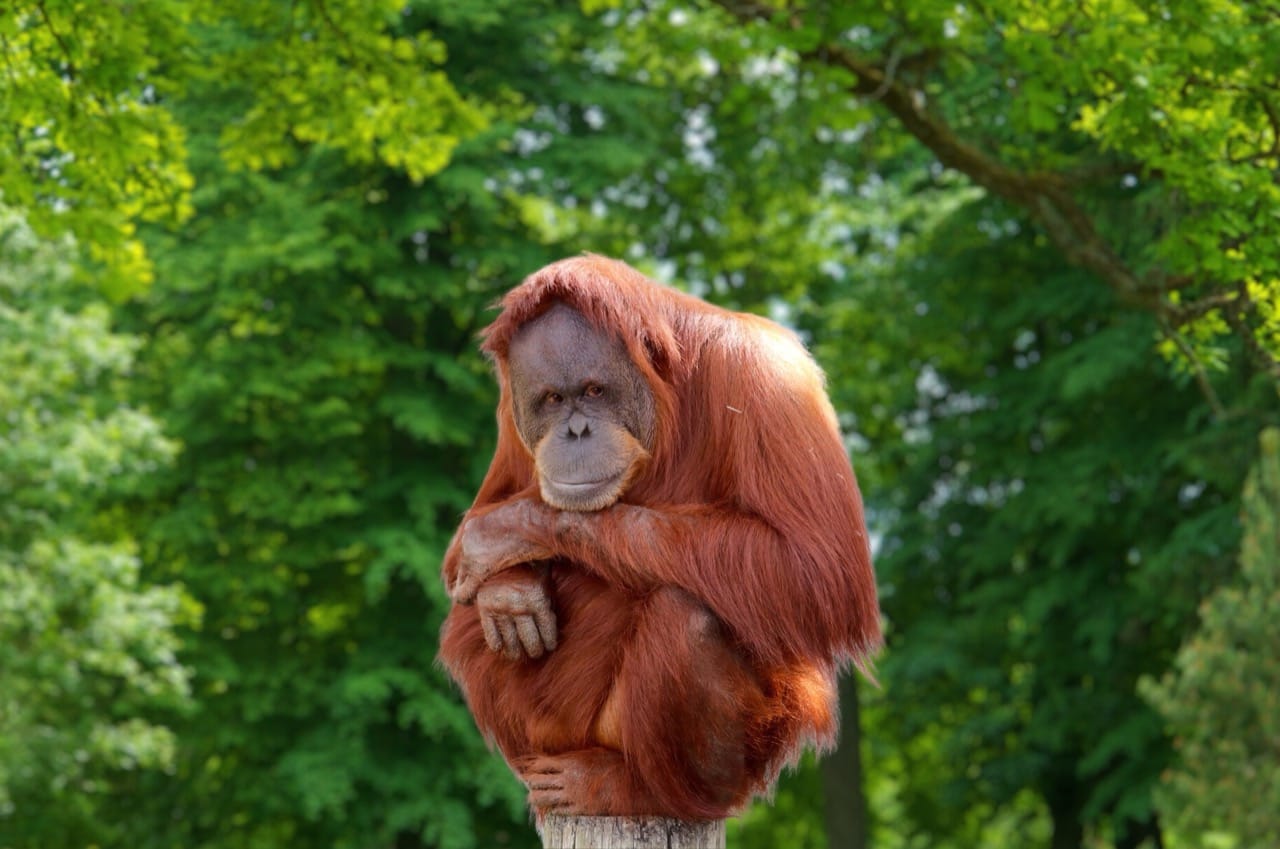Orangutans, with their distinctive red fur and contemplative gaze, are not only one of the most iconic species of the great apes but also one of the most intellectually fascinating creatures on our planet. These gentle red giants are often dubbed the “philosophers of the forest” for their thoughtful behaviors and deep-set eyes that seem to reflect a profound understanding of their lush, arboreal world. Why are orangutans so captivating? Perhaps it is their close genetic relationship to humans, or maybe it’s their solitary nature that mirrors our own moments of introspection. This article delves into the life of the orangutan, exploring its unique characteristics and the challenges it faces in its fight for survival.
Characteristics / Physical Description
Orangutans are distinguished by their impressive red and auburn hair and significantly robust bodies. Adult males can weigh up to 220 pounds and, including their arms, span about 7 feet from fingertip to fingertip. Females are generally smaller, about half the size of males. Their facial structure is quite expressive with a prominent brow ridge and deep-set eyes. The most physically striking feature of orangutans is their long arms, which are well adapted to their arboreal lifestyle, allowing them to navigate the forest canopy with ease.
Taxonomy and Classification
Orangutans are classified in the genus Pongo. There are three extant species: the Bornean orangutan (Pongo pygmaeus), the Sumatran orangutan (Pongo abelii), and the Tapanuli orangutan (Pongo tapanuliensis), which was only identified as a distinct species in 2017. These great apes are part of the Hominidae family, which also includes gorillas, chimpanzees, and humans.
Behavior and Social Structure
Orangutans are predominantly solitary creatures, a rare trait among great apes. Adult males are especially solitary and have large territories that may overlap with those of several females. Interactions tend to occur primarily during mating or between mothers and their offspring. Orangutans are also known for their intelligence, demonstrated by their use of tools in the wild, such as sticks to extract termites from nests or leaves as umbrellas.
Habitat and Distribution
Orangutans are native to Indonesia and Malaysia, specifically on the islands of Borneo and Sumatra. They thrive in tropical rainforests and spend the majority of their lives in trees, making them the largest arboreal mammal.
Diet and Feeding Habits
Their diet is primarily frugivorous, consisting mostly of wild fruits like lychees, mangosteens, and figs. They also eat vegetation, bark, honey, insects, and, on rare occasions, small vertebrates. Orangutans have a unique method of foraging and will often create a mental map of their forest home, remembering the locations of fruiting trees across vast distances.
Breeding and Reproduction
Orangutans have a very slow reproductive rate, which further complicates their conservation. Females give birth to one offspring at a time after a gestation period of about 8.5 months. The interval between births can be as long as 8 years, the longest of any land mammal. Mothers are intensely invested in their offspring, often nursing them until they are about 6 years old.
Relationship with Humans
Humans have had a profound and often detrimental effect on orangutans, primarily through habitat destruction and the illegal pet trade. Orangutans are frequently found in rehabilitation centers, victims of deforestation or captured for sale as exotic pets, a practice that is illegal yet still persists.
Evolutionary History
The evolutionary lineage of orangutans dates back about 16 million years, and they are considered one of the oldest branches of the ape tree. Their evolutionary strategy has focused on a slow life history, low reproductive output, and a high investment in each offspring.
Use as Research Animals
Orangutans have been vital in anthropological research due to their close genetic relation to humans. Studies often focus on their cognitive abilities, social structures, and genetic makeup to gain insights into the evolution of primates, including humans.

